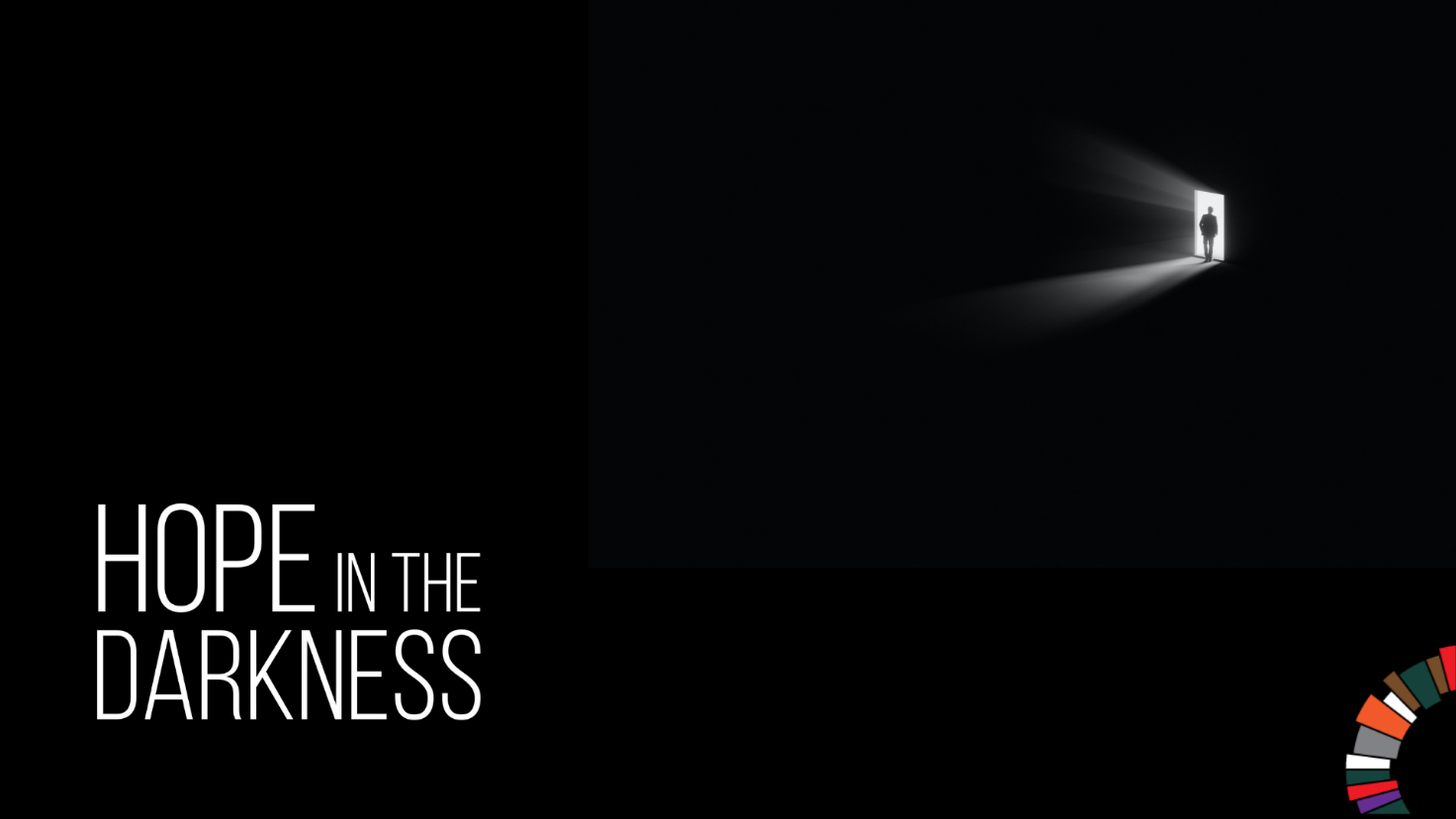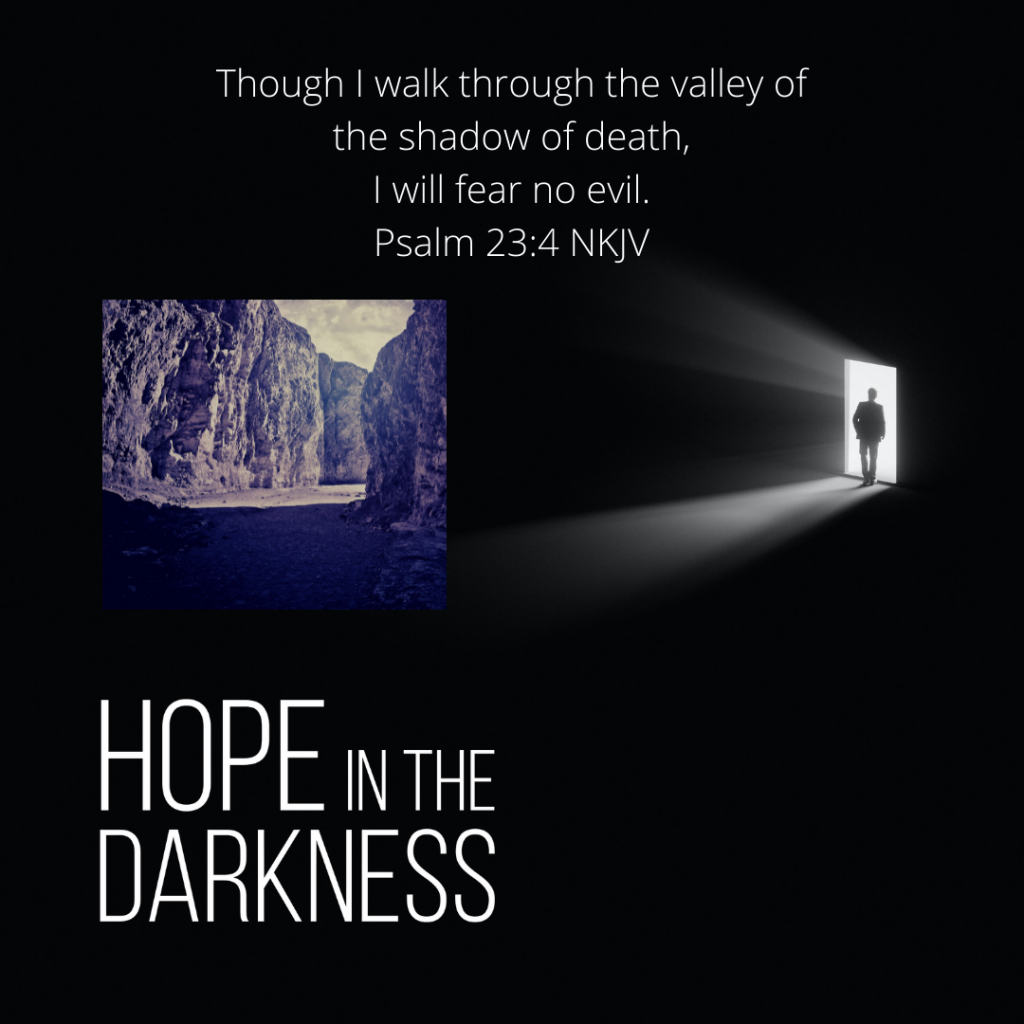Hope in the Darkness, 1 May -12 Jun ’22

“It’s a fact … Night and day, darkness and light, they’re all the same to God” –
Psalm 139:12 TMB
It’s a profound reality: wherever light shines shadows are created. In fact, we only fully appreciate light through its contrasting opposite, darkness.
Pure light is blinding, and shadows help us see more clearly. This is true in so many ways.
In this series we will explore how darkness is no enemy to God’s purposes. We will learn how God embraces darkness as a powerful ally to bring about deep transformation in our lives both individually and corporately.
The series description continues below
| Sermon Date | Bible Reading | Sermon Title | Preacher |
| 1-May | Psalm 23 | The Reality of Darkness: WATCH | Stephen Baxter |
| 8-May | Luke 7:11-17 | Crossing the Street – Modelling the heart of Jesus. WATCH | Scott Pilgrim (Baptist Mission Australia) |
| 15-May | Psalm 139:1-18, 23-24 (NRSV) | The Blessings of Darkness WATCH | Sean Priest |
| 22-May | Romans 7:14-25 | Owning our Darkness WATCH | Matt Henderson |
| 29-May | Mark 13:1-9a | HOPE: Going Through the Darkness WATCH | Stephen Baxter |
| 5-June | 1 Cor 13:1-8a | Artist’s reflection on his art installation WATCH | Michael Henderson |
| 12-June | 2 Cor 5:16-21 | Receiving Welcome WATCH | Stephen Baxter |
Hope in the Darkness series description (cont)

In Christian and Jewish thought, light is almost always good, and darkness is usually bad. But perhaps there is more to darkness than we think. Perhaps darkness is not always the absence of God as Psalm 139 suggests.
The Bible is much more nuanced about darkness than we realise. Creation is spawned in the darkness of the deep. Jacob wrestled with an angel in the darkness of night, so too did the Israelites escape Egypt at night. In addition, most of the prophetic dreams and messages God gave his prophets came at night. Jonah was in the belly of the whale, and Job in the depth of dark despair. Then to cap it all off, the darkness of death and the darkness of the tomb is the place from whence resurrections springs. Darkness holds no fear for God.
So, despite our aversion to darkness, the Bible reveals that darkness can be part of God’s plan and it can teach us things we could never learn in the light. Darkness can be a signpost pointing and leading to a deeper understanding of God. Even though life is full of dark, difficult and challenging times of suffering that we didn’t ask for, darkness is often the seedbed of our transformation.
It was true for Jesus. He learned obedience through the darkness of suffering (Hebrews 5:8). And here is the paradox: we can say that darkness is as necessary as good, and that if we are to be transformed into the likeness of Jesus, we need darkness as much as light.
Darkness can be a signpost pointing and leading to a deeper understanding of God.
A postmodern turn
Despite what the Bible teaches about darkness, it has been a constant dilemma for the church. We long to exist in perfect light where God alone abides (James 1:17), yet we know we live in the reality of the shadowland of our existence.
“In Christian history, we see Eastern Orthodox churches creating heavenly liturgies with little sense of social justice; Luther’s abhorrence of his own darkness; the Swiss Reformers outlawing darkness; the Puritans repressing darkness; the Roman Church consistently unable and unwilling to see its own darkness; the typical believer afraid of darkness; fundamentalists splitting darkness off into a preoccupation with Satan. Then comes postmodernism, with a predictable pendulum swing, seemingly in love with darkness!”[1]
This postmodern turn has caught the church unaware. In our aversion to darkness, we saw postmodernism as a dangerous threat and acted accordingly. In fear we lashed out, distanced ourselves and tried to build walls to keep it out and to keep us safe.
The key to a mature response is facing up to the reality that we all are a mixture of both light and darkness.
Close to home, in Hobart, the Dark Mofo festival is a perfect example of both the postmodern turn and the response of the Church. It is only in the last few years that have we begun to explore how the festival might be more of a God-given opportunity, than a demonic threat.
But for the church to move from seeing it as a threat to an opportunity, to move from recoil to embrace and to love rather than fear, we need to undergo a radical transformation. The key to a mature response is facing up to the reality that we all are a mixture of both light and darkness. There are no perfect people, no perfect institutions and no perfect churches.
Jesus models how to do transformation
We need to undergo a transformation. That will only occur when we face the darkness within the church and in our own lives. Facing the darkness could well save us.
And here Jesus is our great teacher. Again. We know it is through Christ’s suffering that the world is saved. But he not only saves us from our sins, but models how we too are to live through the difficult and dark challenges. Jesus teaches us how to trust amid the suffering, how to bear darkness amid uncertainty, and how to be comfortable amid paradox and mystery.
His way is not avoiding darkness, but living through it. And God vindicated his faithfulness through the resurrection. In doing so, God transformed darkness for all time proving once and for all that even the darkness of death is no threat but an opportunity. It is no longer is the great fear, but the pathway through to our transformation and resurrection. This is why we find hope in the darkness.
What we will learn

In this series we will explore how darkness is no enemy to God’s purposes. We will learn how God embraces darkness as a powerful ally to bring about deep transformation in our lives both individually and corporately.
Understanding darkness from the biblical perspective we do not need to paint ourselves as the light and things like Dark Mofo as the dark. Rather we can enter into Dark Mofo’s darkness just like Jesus did. He entered our mess so we too can enter the mess of our world. And as we do, we acknowledge that there is a darkness within us and that we too struggle to overcome it. We too go through the “valley of the shadow of death” (Ps 23) and we too long to be free from our darkness/sins.
As we go through this series, we hope it will enable us to go continue the process of transformation God is taking us through, and it will enable us to engage our community afresh and anew in these “dark” times. As we do, we recognised this is a moment of opportunity, not a moment of threat.
[1] Clipped from: https://cac.org/seeing-through-shadows-2017-09-03/
